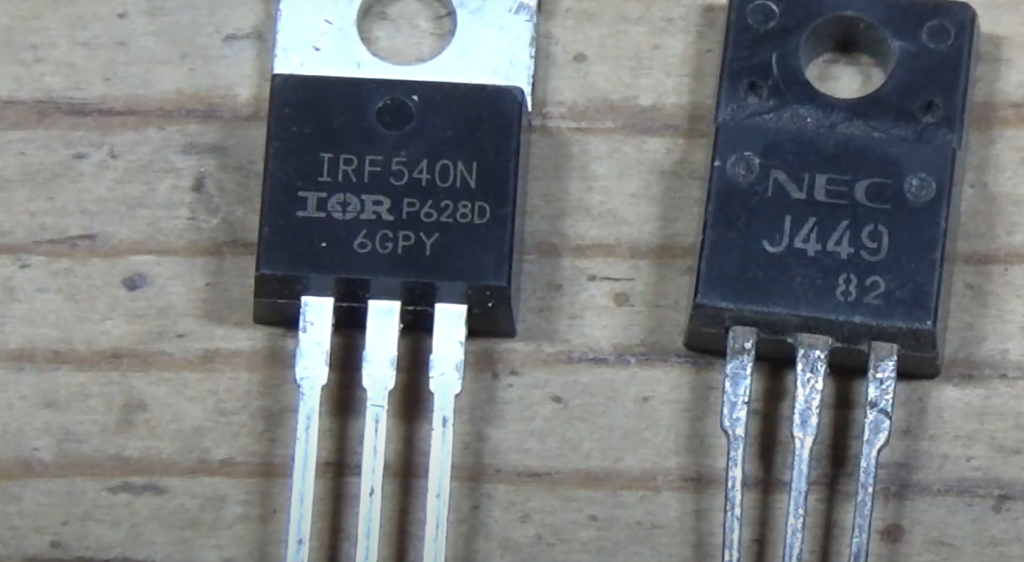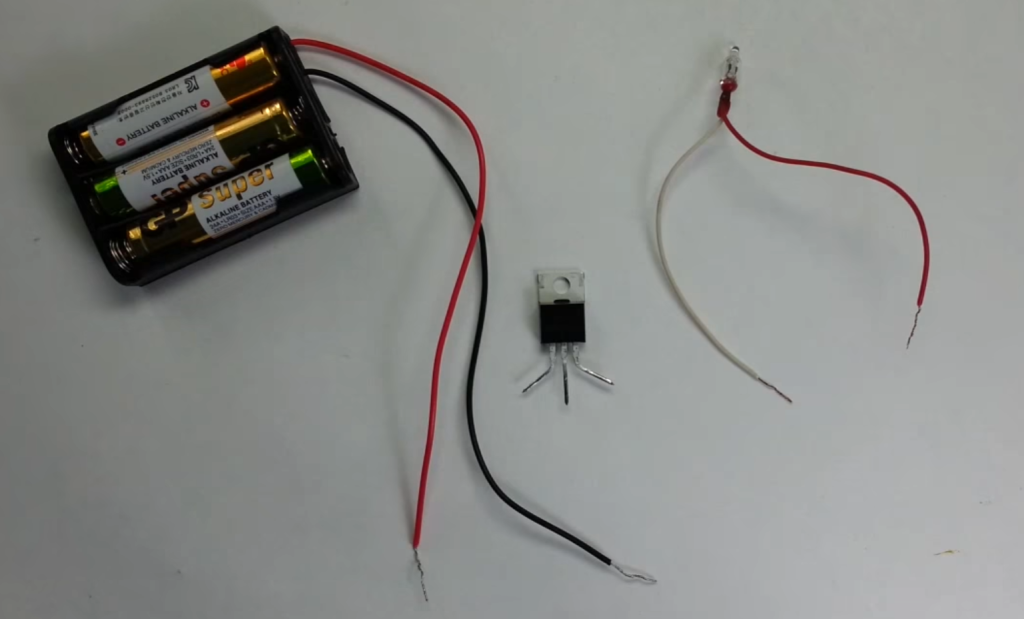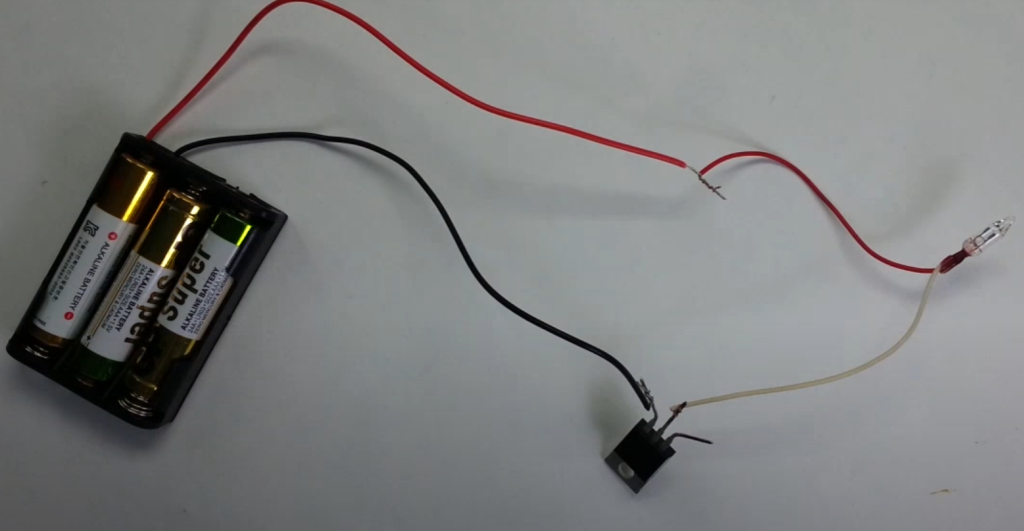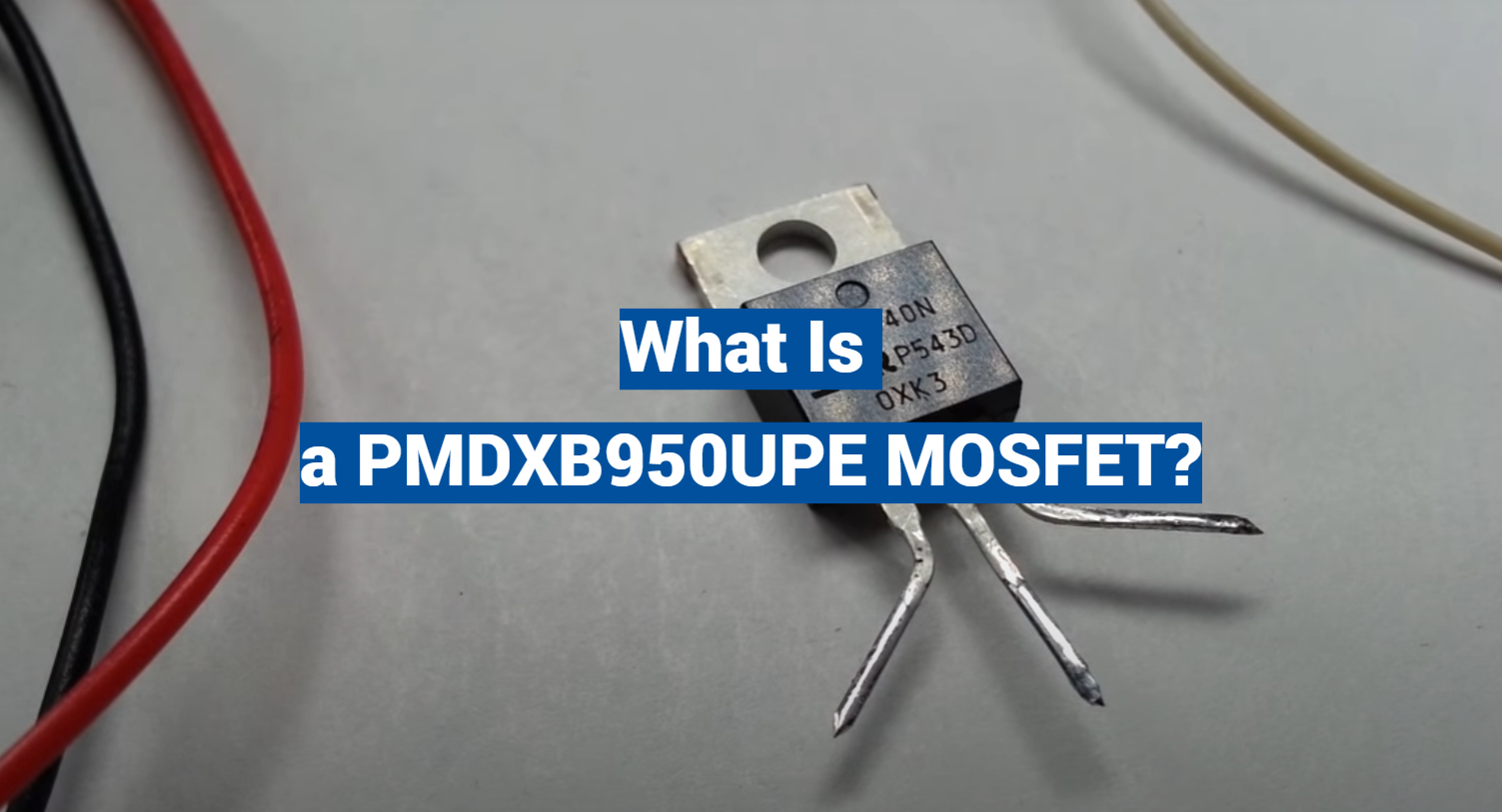Welcome to the world of advanced electronics, where the mysteries of the PMDXB950UPE MOSFET are waiting to be unraveled! If you find yourself contemplating the enigmatic nature of this semiconductor device, fear not, for this practical guide is designed to shed light on the inner workings of the PMDXB950UPE MOSFET. Whether you’re a seasoned engineer seeking a deeper understanding or a curious enthusiast eager to explore the realm of cutting-edge technology, this article will journey into the heart of the PMDXB950UPE MOSFET, demystifying its complexities and revealing its true potential. Step into the realm of semiconductors and embrace the power of knowledge!
What is MOSFET?

The MOSFET can be used to amplify signals or switch electrical currents on and off. It has two basic modes of operation: enhancement mode (E-mode) and depletion mode (D-mode). In enhancement mode, the current flow is increased when a positive voltage is applied to the gate and decreased when a negative voltage is applied. In depletion mode, the current flow is decreased when a positive voltage is applied to the gate and increased when a negative voltage is applied.
MOSFETs are widely used in integrated circuits (ICs) for various applications. They are used in analog circuits, digital logic gates, power management circuits and RF (radio frequency) amplifiers. MOSFETs can operate at high frequencies and over a wide range of temperatures. They also offer low noise levels and require very little power to operate.
MOSFETs are essential components for any modern electronics system and they provide the foundation for many advanced microelectronic devices. They are used in consumer electronics, automotive systems, industrial automation and medical instruments. MOSFETs can also be used as switches to connect two circuits with different voltage levels. With their high-speed switching capability, they are suitable for use in applications such as power converters and motor controllers. Additionally, MOSFETs are used in power amplifiers, analog-to-digital converters and Voltage Regulators [1].
MOSFET modes
Depletion Mode
The depletion mode MOSFET, a type of metal-oxide-semiconductor field-effect transistor, finds application in a diverse range of scenarios. It serves well in low-current analog switching as well as high-power DC motor control situations. One notable characteristic of this MOSFET is that the body region is reverse-biased and no external gate bias is applied. When the drain voltage surpasses the source voltage, the MOSFET enters the saturation mode, allowing current to flow through the channel. This operational mode is also referred to as the linear mode or non-saturated mode, highlighting its unique behavior and versatility in various electronic circuits and systems.

Enhancement Mode
The enhancement mode MOSFET, in contrast to the depletion mode, requires an external gate bias to facilitate switching on and off. This type of transistor is widely utilized in logic circuits for high-speed digital switching, boasting a remarkably fast response time and minimal power dissipation. When operating in this mode, also referred to as saturated mode or switching mode, the MOSFET ensures optimal performance and efficiency in various electronic applications [2].
Biasing MOSFETs
In order to successfully operate a MOSFET in either depletion or enhancement mode, it must be biased appropriately. Biasing is the process of applying a voltage to the gate terminal in order to control the current flow through the device. The voltage applied to the gate terminal can either be a positive or negative voltage, depending on the type of MOSFET. In general, a positive voltage is used in an enhancement mode transistor and a negative voltage for depletion mode transistors. Additionally, the magnitude of the bias voltage should not exceed the manufacturer’s specifications to avoid damaging the device.

Working Principle of MOSFETs
MOSFETs (Metal Oxide Semiconductor Field Effect Transistors) are solid-state devices with three terminals that can be used as switches or amplifiers. The MOSFET works based on the principle of electric field-controlled current flow between the source and drain. The gate terminal is separated from the rest of the device by a thin layer of metal oxide, enabling it to control the current flow by changing the electric field between the source and drain.
P-Channel MOSFET
P-channel MOSFETs, short for Metal-Oxide-Semiconductor Field-Effect Transistors, are widely employed in various electronic applications. These MOSFETs boast a p-type semiconductor material positioned between the source and drain, rendering them particularly suitable for low-voltage scenarios. When a positive voltage is applied to the gate terminal, it creates an attractive force that pulls electrons from the source, effectively enabling the flow of current through the device from the source to the drain. This characteristic makes P-channel MOSFETs a vital component in modern electronics, facilitating efficient control and amplification of signals in numerous circuits and systems.
N-Channel MOSFET
The N-channel MOSFET, short for Metal-Oxide-Semiconductor Field-Effect Transistor, is a type of MOSFET that utilizes an n-type semiconductor material between the source and drain regions. This configuration allows for precise control of the current flow through the device.
When a negative voltage is applied to the gate terminal, it creates an electric field that repels electrons from the source, creating a channel for current to flow from the drain to the source. This mechanism allows the N-channel MOSFET to act as a switch or amplifier in electronic circuits.
By carefully tuning the voltage applied to the gate, the N-channel MOSFET can be used to regulate and control the flow of current, making it an essential component in various electronic applications, including power electronics, digital logic circuits, and signal processing [3].

How to use a PMDXB950UPE MOSFET?
Using a PMDXB950UPE MOSFET is relatively straightforward. The most important feature of this type of MOSFET is its high voltage and power handling capability, allowing for easy control of high-power electronics such as motors and lights.
To successfully utilize the device, begin by establishing a connection between the drain terminal and the load being controlled, typically an LED or motor. Next, ensure a secure connection between the source and the ground. Lastly, link the gate of the MOSFET to the driving signal, commonly a low-voltage digital logic signal derived from a microcontroller or any other electronic device. By following these steps, you can effectively operate the device and achieve the desired outcome.
The PMDXB950UPE, a versatile device, not only functions as a signal amplifier but also allows for the amplification of signals from various sensors such as thermocouples and strain gauges. When utilized in this configuration, the signal is typically positioned across the drain and source terminals, while the gate remains connected to the ground. This setup ensures that the signal can be amplified without the introduction of any unwanted noise or distortion, resulting in enhanced signal quality and accuracy.
Finally, it should be noted that MOSFETs such as the PMDXB950UPE must be used in conjunction with an external heatsink when used in high-power applications. Without an external heatsink, the device can quickly overheat and become damaged beyond repair. By using a proper heatsink, it is easy to ensure that the PMDXB950UPE will operate reliably for many years.
In conclusion, the PMDXB950UPE MOSFET is a powerful and versatile tool for controlling high-power electronics. With the proper precautions and setup, it can be used for a variety of applications with reliability and ease.

FAQ
What does a MOSFET do?
A MOSFET (Metal Oxide Semiconductor Field Effect Transistor) is a fundamental type of transistor widely utilized in electronic circuits to amplify or switch electronic signals with precision. It operates by effectively controlling and modulating the flow of current through the transistor. At its core, a MOSFET consists of an insulated gate that governs and regulates the voltage applied to the semiconductor material, thus facilitating the manipulation of current flow.
This innovative design and mechanism enable MOSFETs to deliver outstanding performance characteristics, allowing for the use of smaller currents to produce larger output currents in comparison to conventional bipolar transistors. This exceptional attribute makes MOSFETs an indispensable component in various electronic devices and systems, contributing to their efficiency and functionality.
What are the common applications of MOSFETs?
MOSFETs can be used in a wide variety of applications including power supplies, switching circuits, amplifiers, motor control and signal processing. They are also commonly used in digital logic circuits such as microcontrollers and embedded systems. Additionally, they are often utilized in radio-frequency circuits to control the transmission and reception of radio waves. Moreover, MOSFETs are used in a range of automotive systems for applications such as fuel injection, engine management, light control and airbag deployment.
What are the advantages of using MOSFETs?
MOSFETs offer several benefits over other types of transistors, such as high input impedance, low power consumption and fast switching speeds. Additionally, they have a wide range of operating voltages and can be used for both analog and digital applications. Furthermore, the superior design of MOSFETs allows them to handle large currents with relative ease while keeping their size small. This makes them an ideal choice for many electronic applications where space and power consumption are important considerations.
What is the difference between an N-channel MOSFET and a P-channel MOSFET?
The main difference between an N-channel MOSFET and a P-channel MOSFET is that the former has its source connected to a negative voltage, while the latter has its source connected to a positive voltage. This difference in polarity results in different behavior when the gate is activated, as N-channel MOSFETs can be used to conduct current from source to drain while P-channel MOSFETs can be used to conduct current from drain to source. Additionally, due to the different polarity of each type of MOSFET, the characteristics of each type will vary depending on the voltage applied. For instance, an N-channel MOSFET typically has a higher current capacity than a P-channel MOSFET at the same voltage.
What are the different packages of MOSFETs?
MOSFETs are available in a variety of packages, such as DIPs (Dual In-line Packages), SOTs (Small Outline Transistors) and TO-220s. Each type of package offers distinct advantages depending on the application. For instance, DIP packages are more suitable for circuits where high power dissipation is required, while SOTs are ideal for applications where space is a major factor. TO-220 packages, meanwhile, provide excellent thermal performance and power dissipation capabilities.
How does temperature affect the performance of MOSFETs?
MOSFETs are highly sensitive to temperature and their performance may be affected by elevated temperatures. As the temperature rises, the MOSFET will become less efficient and its maximum current ratings will decrease. Additionally, it is also important to note that when operated at high temperatures, certain MOSFETs can suffer from a phenomenon called thermal runaway, where an increase in temperature causes further increases in current which in turn causes additional temperature increases. Thus, it is important to ensure that MOSFETs are operated within their specified temperature range to prevent any damage or malfunction and to ensure optimal performance.
How does a P channel MOSFET work?
A P-channel MOSFET operates similarly to an N-channel MOSFET, but it has its source connected to a positive voltage. When the gate is activated, it creates a conductive path between the drain and source allowing current to flow from the drain to the source. The amount of current that flows through the channel is determined by the voltage applied to the gate. Additionally, due to the different polarity of P-channel MOSFETs, they tend to have lower current capacities than N-channel devices at the same voltage.
How do I choose the right MOSFET for my application?
When choosing a MOSFET for an application, it is important to consider factors such as the maximum current rating, power dissipation requirements and operating temperature range. Additionally, it is also important to consider the type of package required as each type offers different advantages depending on the application. As such, choosing the right MOSFET for an application can be a complex process that requires careful consideration of all these factors. It is thus recommended to consult with qualified professionals when choosing a MOSFET for an application to ensure that the right device is selected.
How many types of MOSFET are there?
There are two main types of MOSFETs: N-channel and P-channel. Each type is suitable for different applications, depending on the voltage applied, the current requirements and other factors. Additionally, each type can be further divided into various subtypes based on their characteristics such as maximum current rating, power dissipation capabilities and operating temperature range. Furthermore, there are also other types of MOSFETs such as depletion mode and enhancement mode MOSFETs, which have different behavior than the traditional N-channel and P-channel devices. Thus, there are a variety of types of MOSFETs that can be used for different applications depending on the needs of the designer.
What safety precautions should be taken when working with MOSFETs?
Working with MOSFETs can be potentially hazardous due to their high voltage and current handling capabilities. As such, it is important to take safety precautions when working with these devices. It is recommended to always wear protective clothing and eye protection when working with high-voltage components. Additionally, all connections should be properly insulated to prevent any accidental contact with live components. Furthermore, it is also important to ensure that the device is operating within its specified temperature range to avoid any damage or malfunction due to overheating. Taking these precautions will help ensure the safety of the user and the longevity of the MOSFETs being used.
Why is it important to choose the right MOSFET for an application?
Choosing the right MOSFET for an application is essential because each type of device has different characteristics that will affect its performance. For instance, N-channel MOSFETs tend to have higher current capacities than their P-channel counterparts at the same voltage and also typically have lower power dissipation requirements. Thus, selecting the proper device for an application is essential for ensuring that it will perform optimally and reliably. Additionally, selecting the wrong device may cause damage to the circuit or component due to excessive current or excess heat generation. Therefore, taking the time to select the right MOSFET is important for achieving optimal performance in any given application.
Conclusion Paragraph
So, a PMDXB950UPE MOSFET is a great choice for applications where large power and high-frequency switching are needed. It has built-in protection features, which make it ideal for use in a wide range of industrial, automotive, and consumer electronic devices. Its low R<sub>DS</sub>(on) parameter provides excellent resistance and heat dissipation properties while its relatively low maximum gate charge makes it an ideal choice for high-speed switching applications. Additionally, its low input capacitance and gate charge make it suitable for use in power control circuits, whilst the ultra-low profile package ensures improved thermal performance. Overall, the PMDXB950UPE MOSFET is an excellent choice for a wide range of applications.
Useful Video: N&P Channel MOSFET, How to use N channel MOSFET as a P channel MOSFET
References:
- https://www.techtarget.com/whatis/definition/MOSFET-metal-oxide-semiconductor-field-effect-transistor
- https://www.electronics-tutorials.ws/transistor/tran_6.html
- https://www.elprocus.com/mosfet-as-a-switch-circuit-diagram-free-circuits/

